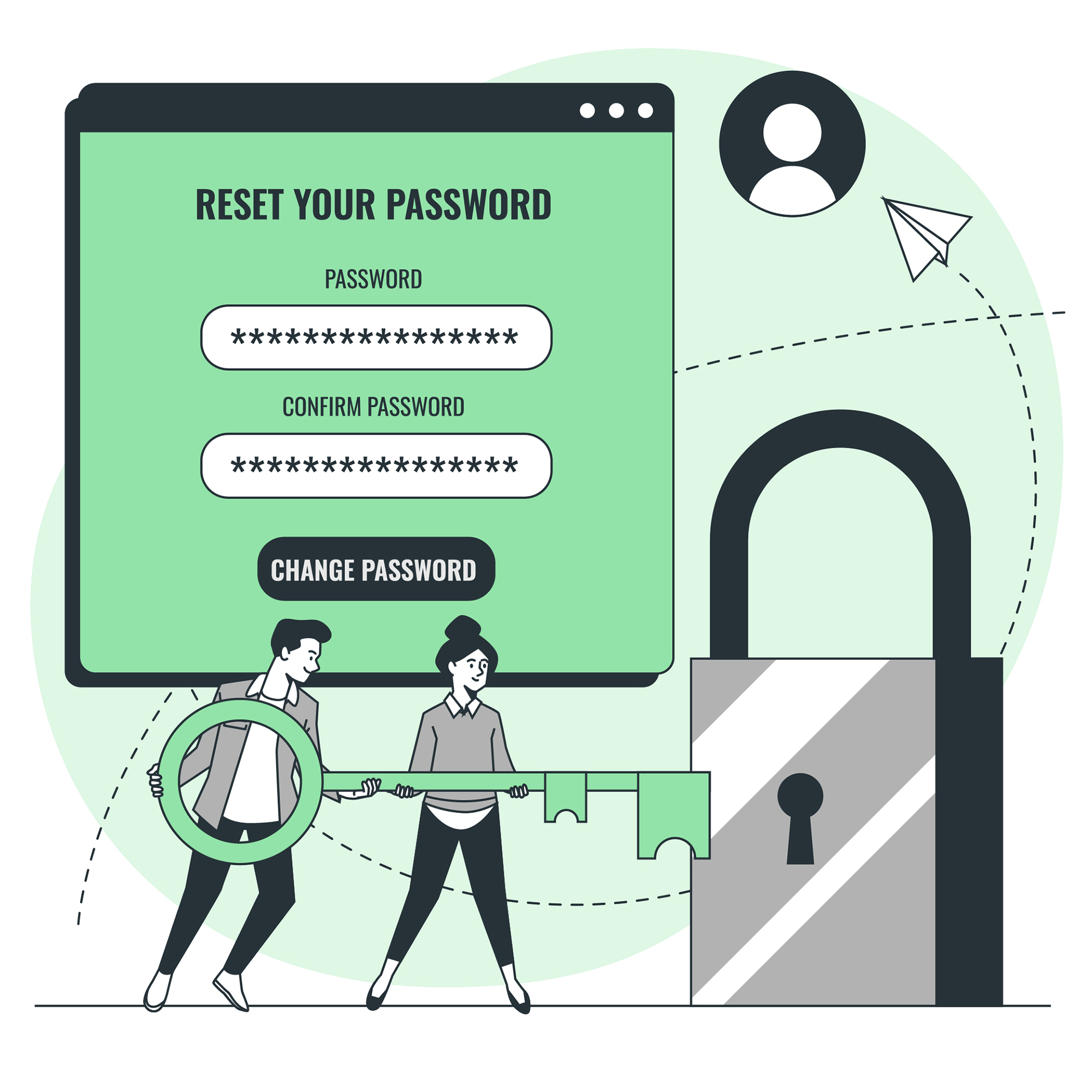Understanding Biometric Authentication
Biometric authentication relies on unique physiological or behavioral characteristics to verify a user’s identity. This method includes fingerprints, facial recognition, iris scans, and voice patterns. It promises enhanced security, convenience, and a reduction in the reliance on memorizing passwords.
Advantages of Biometric Authentication
- Security: Biometric data is nearly impossible to duplicate, offering a strong defense against unauthorized access.
- User Experience: It simplifies the authentication process, eliminating the need to remember complex passwords.
- Privacy: Reduces the need to store passwords, mitigating risks associated with data breaches.
Traditional Authentication Methods
Traditional authentication methods encompass passwords, security questions, and tokens. Despite widespread use, they come with drawbacks such as vulnerability to hacking, the inconvenience of managing multiple passwords, and susceptibility to human error.
Limitations of Traditional Authentication
- Security Risks: Passwords can be easily guessed or stolen, posing a threat to account security.
- User Experience: Managing numerous passwords can be cumbersome and lead to frustration.
- Human Error: Mistakes during login attempts can result in locked accounts.
Real-life Examples and Case Studies
Biometric Authentication in Action
- Smartphones: Use fingerprint or facial recognition for device unlocking, enhancing security and user convenience.
- Financial Institutions: Employ biometric authentication for secure transactions, boosting customer confidence and security.
Traditional Passwords in Practice
- Data Breaches: High-profile incidents highlight the vulnerabilities of traditional authentication methods, emphasizing the need for stronger security measures.
Conclusion
The choice between biometric and traditional authentication methods hinges on balancing security needs with user convenience and cost considerations. Biometric authentication offers superior security and a better user experience but requires significant investment and addresses privacy concerns. Traditional methods, while familiar and less costly, fall short in security and can frustrate users. Ultimately, the selection depends on the specific requirements of users and the desired level of security.
Understanding Biometrics and Traditional Authentication Methods
In today’s digital world, ensuring the security of our personal data and online activities is more crucial than ever. While traditional authentication methods like passwords and security questions have been the go-to for decades, the advent of biometric technologies is reshaping the way we secure access to information and services.
Traditional Authentication: The Old Guard
Traditional authentication methods have been the cornerstone of digital security since the early days of computing. At its core, password-based authentication relies on users remembering a combination of letters, numbers, and symbols to gain access to their accounts. This method, while simple to implement, comes with significant drawbacks, including the risk of password theft and the challenge of creating strong, memorable passcodes.
Another common traditional method is security questions, which ask users to answer personal queries to verify their identity. While seemingly secure, this approach also has vulnerabilities, such as the potential for social engineering attacks and the ease of guessing answers.
The Rise of Biometric Authentication
Biometric authentication represents a significant leap forward in security technology. It involves verifying a person’s identity through unique physiological or behavioral traits, including fingerprints, facial recognition, iris scans, and voice analysis. These methods offer several advantages over traditional authentication:
- Uniqueness: Each individual’s biometric data is unique, making it nearly impossible for unauthorized individuals to impersonate them.
- Convenience: Users don’t need to remember complex passwords or answer security questions; instead, they use natural, innate features.
- Security: Biometric systems are difficult to spoof or hack, providing a higher level of security compared to traditional methods.
Practical Applications and Considerations
While biometric authentication offers enhanced security, its implementation comes with considerations. For instance, privacy concerns arise from the collection and storage of sensitive biometric data. Organizations must ensure robust data protection measures are in place to safeguard against misuse.
Moreover, accuracy and reliability are critical factors. No biometric system is 100% accurate, and environmental conditions can affect performance. Therefore, organizations must select biometric solutions that balance security needs with practical usability.
Choosing the Right Approach
Selecting the right authentication method depends on an organization’s specific security requirements and the nature of the data being protected. A hybrid approach, combining biometric and traditional authentication methods, might be the most effective strategy. This could involve using biometrics for primary access control, supplemented by passwords or security questions for added layers of security.
In conclusion, the evolution from traditional to biometric authentication reflects society’s growing demand for secure, convenient access to digital resources. As technology continues to advance, it’s essential for organizations to stay informed about the latest authentication methods and adapt their strategies accordingly to protect against evolving threats.
It seems there was no text provided for revision. Could you please share the specific section of the article about Biometrics and Other Authentication Types that you would like me to improve?
Biometrics and Other Authentication Types: Enhancing Security and Convenience
Enhanced Security through Biometrics
Biometric authentication leverages unique physiological or behavioral characteristics—such as fingerprints, facial recognition, voice patterns, or iris scans—to verify an individual’s identity. This method stands out for its unparalleled security. Unlike passwords, which can be stolen, forgotten, or guessed, biometric data is virtually impossible to replicate. Imagine trying to steal someone’s fingerprint; it’s akin to trying to copy a snowflake’s pattern perfectly—a task far beyond current technology. This inherent uniqueness makes biometric systems highly secure against unauthorized access.
Convenience and User Experience
Switching from traditional passwords to biometric authentication significantly enhances the user experience. Users no longer have to remember complex strings of characters, which often lead to frustration and security breaches. Instead, they can authenticate themselves effortlessly, whether it’s unlocking their phone with a fingerprint scan or logging into their computer with facial recognition. This convenience extends beyond personal devices to various services, including banking apps and online shopping platforms, making digital interactions smoother and more secure.
Reduced Dependency on Memorization
Traditional password-based authentication relies heavily on human memory, which is prone to errors and vulnerabilities. With biometrics, however, the reliance on memorization is drastically reduced. Since biometric data is innate and cannot be forgotten, users benefit from a system that’s both secure and easy to use. This shift minimizes the risk associated with forgetfulness or the reuse of weak passwords, leading to a more robust security posture overall.
Practical Example: Facial Recognition Technology
Facial recognition technology is a prime example of how biometrics enhance security and convenience. When accessing a smartphone, instead of typing a passcode, the user simply looks at the screen. The device analyzes the unique features of the face and matches them against stored data. If there’s a match, access is granted. This process is quick, contactless, and requires no conscious effort from the user, exemplifying the blend of security and usability that biometrics offer.
Conclusion
Biometrics and other advanced authentication methods represent a significant leap forward in securing digital identities. By leveraging the uniqueness of human biology, these technologies offer a balance between high security and user-friendly experiences. As society becomes increasingly digital, the adoption of such authentication types will become even more crucial, ensuring that our digital spaces remain accessible yet impenetrable to unauthorized users.
Data Privacy and Security
Biometric data, such as fingerprints, facial recognition patterns, and iris scans, offer a unique form of identification. However, the collection and storage of this sensitive information pose substantial privacy risks. Imagine your fingerprint being used without your consent, opening doors or accessing financial accounts. This scenario highlights the importance of robust data protection measures. Biometric data must be handled with the utmost care to prevent unauthorized access and misuse.
Practical Example: Facial Recognition in Public Spaces
Consider the increasing use of facial recognition technology in public areas, such as airports and shopping malls. While it enhances security by identifying known criminals or missing persons, it also raises questions about privacy. If implemented without proper safeguards, it could lead to mass surveillance, violating individuals’ right to privacy.
Code Snippet: Ensuring Secure Data Storage
# Pseudocode for encrypting biometric data before storage
def encrypt_biometric_data(data):
# Use a strong encryption algorithm
encrypted_data = strong_encryption_algorithm(data)
return encrypted_data
# Example usage
biometric_data = collect_biometric_data()
encrypted_data = encrypt_biometric_data(biometric_data)
store_data(encrypted_data)This snippet illustrates how biometric data can be encrypted before storage, adding a layer of security. It’s crucial to choose encryption algorithms that balance security and performance.
Implementation Costs and Complexity
Integrating biometric authentication into existing systems is no small feat. It requires significant investment in hardware, software, and training. For instance, installing fingerprint scanners in every office door involves not just purchasing the devices but also modifying the building’s infrastructure to accommodate them. Additionally, employees need to be trained on how to use these systems effectively, which adds to the overall cost.
Subsection: The Cost Breakdown
- Hardware: The initial purchase of biometric devices can be expensive.
- Software: Developing or integrating custom software to manage biometric data adds to the costs.
- Training: Employees must be trained on how to use biometric systems, affecting productivity during the transition period.
Device Compatibility
Not all biometric technologies are created equal. Some methods, like vein pattern recognition, require specialized equipment that might not be compatible with everyday devices. This limitation can restrict the widespread adoption of certain biometric technologies. For example, while many smartphones now support fingerprint scanning, fewer support more advanced techniques like iris scanning due to compatibility issues with current hardware.
By addressing these challenges—data privacy, implementation costs, and device compatibility—we can harness the full potential of biometrics in enhancing security and convenience.
Understanding Biometrics and Other Authentication Types
Familiarity: The Comfort of Tradition
Traditional authentication methods have long been the standard for accessing digital resources. These methods, such as passwords and security questions, are familiar to almost everyone. Unlike newer technologies, they don’t require users to learn anything new, making them instantly accessible without the need for training or adjustment. This familiarity extends to their wide acceptance across all types of platforms and services, ensuring a seamless experience regardless of where one interacts online.
Wide Availability: A Universal Standard
The ubiquity of traditional authentication methods cannot be overstated. From social media accounts to banking portals, these methods serve as the gatekeepers to our digital lives. They are recognized and implemented by virtually every service provider, making them a reliable choice for securing access. This universal acceptance ensures that users can easily navigate the digital world without encountering barriers or needing to adapt to unfamiliar systems.
Low Implementation Cost: A Cost-Effective Solution
One of the significant advantages of traditional authentication methods is their low implementation cost. Compared to biometric solutions, which can be expensive due to the need for specialized hardware and software, traditional methods often require little to no initial investment. This cost-effectiveness makes them an attractive option for businesses and organizations looking to enhance security without breaking the bank. Moreover, as these methods rely on widely available technology, there’s no need for costly upgrades or replacements, further reducing operational expenses.
By leveraging the strengths of traditional authentication methods, individuals and organizations can enjoy a balance of security, accessibility, and affordability. While biometrics offer exciting possibilities for the future, the proven reliability and broad acceptance of traditional methods ensure that they remain a vital part of the authentication landscape.
Biometrics and Other Authentication Types
Security Vulnerabilities in Traditional Authentication Methods
Traditional authentication methods, such as passwords and security questions, are prone to several vulnerabilities that compromise security:
- Password Compromise: Hackers use sophisticated techniques to crack passwords, leading to unauthorized access.
- Guessing Attacks: Attackers may guess passwords, especially if they are weak or common.
- Phishing Scams: Users might inadvertently reveal their passwords through phishing scams.
The Burden of Multiple Passwords
Managing multiple passwords across various platforms and services can be a significant challenge for users:
- Password Fatigue: Users often resort to simple, easily guessable passwords due to the difficulty of remembering complex ones for each service.
- Security Risks: Simple passwords increase the risk of successful attacks.
- User Frustration: The need to remember and manage numerous passwords leads to frustration and potential security lapses.
Human Error in Authentication Processes
Mistakes during the password entry process can also pose security risks:
- Typos and Lockouts: A single typo can result in an account being locked out, preventing legitimate access.
- Reused Passwords: To avoid forgetting passwords, users sometimes reuse them across different sites, increasing the risk of a breach affecting multiple accounts.
Advantages of Biometrics and Other Authentication Types
Biometric and alternative authentication methods offer significant advantages over traditional password-based systems:
- Enhanced Security: Biometrics, such as fingerprint recognition or facial recognition, are unique to each individual, making them nearly impossible to steal or replicate.
- Convenience: Biometric authentication eliminates the need to remember complex passwords, offering a seamless user experience.
- Reduced Risk of Human Error: By eliminating the need to input credentials, biometrics reduces the risk of mistakes and lockouts.
Practical Example: Implementing Two-Factor Authentication
Two-factor authentication (2FA) combines something the user knows (password) with something the user has (a mobile device). This method significantly enhances security:
# Example of enabling 2FA for a user account
def enable_2fa(user):
# Step 1: User sets up a strong password
set_password(user, "strong_password")
# Step 2: User receives a one-time code via SMS
send_sms_code(user)
# Step 3: User enters the code within a time window
verify_code(user, entered_code)
# Step 4: If successful, enable 2FA
enable_two_factor_authentication(user)
# Function to simulate sending an SMS code
def send_sms_code(user):
pass
# Function to verify the received code
def verify_code(user, entered_code):
pass
# Function to enable 2FA for a user
def enable_two_factor_authentication(user):
passThis example illustrates how 2FA adds an extra layer of security without sacrificing usability.
Conclusion
Biometrics and other advanced authentication types address the limitations of traditional methods, offering enhanced security and a better user experience. As technology evolves, it’s crucial to stay informed about the latest authentication trends to protect personal and organizational data effectively.
Combining Biometrics with Traditional Authentication: A Multi-Factor Approach
In today’s digital age, securing our online identities has become paramount. To address the evolving threats and enhance security without compromising convenience, a hybrid approach that merges biometric and traditional authentication methods is gaining traction. This method, known as multi-factor authentication (MFA), offers a comprehensive solution by leveraging the unique advantages of both types of authentication.
Understanding Biometric Authentication
Biometric authentication relies on unique physiological or behavioral characteristics to verify an individual’s identity. These can include fingerprints, facial recognition, iris scans, voice patterns, and even gait analysis. The strength of biometrics lies in its high level of accuracy and difficulty to replicate, making it a formidable barrier against unauthorized access.
Example: Facial Recognition in Mobile Devices
Consider how smartphones use facial recognition technology. When unlocking your phone, the device analyzes the pattern of your face through the camera. If the match is close enough to your stored data, access is granted. This process exemplifies the precision and efficiency of biometric authentication.
Traditional Authentication Methods
Traditional authentication methods have been the cornerstone of security for decades. They include something you know (passwords, PINs) and something you have (security tokens, mobile devices). While less secure than biometrics due to the potential for loss or theft, these methods remain crucial for their widespread adoption and ease of use.
Example: Using a Password and a Security Token
Imagine accessing your bank account online. First, you enter your username and password—a piece of information only you should know. Then, you receive a one-time code via SMS on your registered mobile phone—a possession exclusive to you. By requiring both, the system ensures that even if one factor is compromised, the other serves as a backup, significantly reducing the risk of unauthorized access.
The Power of Multi-Factor Authentication
By integrating biometric and traditional authentication methods, MFA creates a layered defense mechanism. Each layer adds an additional challenge for potential intruders, making it exponentially harder to breach security.
How It Works: An Overview
- First Factor—Something You Know: Start with a basic form of authentication, such as entering a password.
- Second Factor—Something You Have: Follow up with a verification step that requires possession, like receiving a code on your phone.
- Third Factor—Something You Are: Conclude with a biometric check, ensuring the person attempting to authenticate is indeed who they claim to be, through fingerprints, facial recognition, etc.
This sequential process not only enhances security but also maintains user convenience by minimizing the need for cumbersome procedures.
Conclusion
Adopting a multi-factor authentication approach represents a significant leap forward in securing digital identities. By thoughtfully combining the strengths of biometric and traditional authentication methods, organizations and individuals alike can enjoy a balance between security and usability. As cyber threats continue to evolve, embracing this hybrid model will be essential for safeguarding sensitive information in the years to come.
Choosing Between Biometric and Traditional Authentication Methods
Selecting the right authentication method—whether it’s biometric or traditional—is a critical decision that hinges on an organization’s unique needs and security objectives. This choice isn’t just about technology; it’s about balancing cost, user convenience, and the level of security required. In today’s rapidly evolving digital environment, understanding the nuances of various authentication types is essential for safeguarding data and ensuring a positive user experience.
Understanding Biometric Authentication
Biometric authentication relies on unique physiological or behavioral characteristics to verify identity. These can range from fingerprints and facial recognition to voice patterns and iris scans. The key advantage of biometrics lies in its high level of accuracy and the fact that it’s difficult to replicate or steal. For instance, imagine accessing a secure server room: instead of remembering a complex password, you could simply use your fingerprint. This not only enhances security but also streamlines the process, making it faster and more intuitive for users.
Traditional Authentication Methods
Traditional authentication methods, on the other hand, typically involve something the user knows (like a password) or possesses (such as a physical token). While passwords have been the standard for decades, they come with significant drawbacks, including susceptibility to phishing attacks and the challenge of managing complex password policies. Physical tokens, while more secure than passwords alone, require users to carry additional items, which might not always be convenient.
Factors Influencing the Choice
When deciding between biometric and traditional authentication, several factors come into play:
- Cost: Implementing biometric systems can be more expensive upfront due to hardware and software costs. However, the long-term benefits in terms of enhanced security and reduced IT support for password issues often outweigh the initial investment.
- User Experience: Biometric authentication generally offers a smoother and more natural user experience compared to traditional methods. It eliminates the need for users to remember intricate passwords, reducing frustration and increasing efficiency.
- Security Requirements: Organizations with stringent security needs, such as financial institutions or government agencies, may opt for biometric authentication due to its higher degree of uniqueness and difficulty to compromise.
Staying Informed
As the digital world progresses, so do the threats and vulnerabilities associated with authentication methods. Therefore, it’s imperative for organizations to stay abreast of the latest advancements in both biometric and traditional authentication technologies. This includes keeping an eye on emerging trends, such as multi-factor authentication (MFA) and continuous authentication, which combine elements of both biometric and traditional methods to offer unparalleled security.
In summary, the choice between biometric and traditional authentication is multifaceted and requires careful consideration of an organization’s specific context. By weighing the pros and cons of each approach, businesses can implement an authentication strategy that not only meets their security needs but also provides a seamless experience for their users.




![Crafting Unforgettable Passwords: A Guide for Developers A string of random characters typically has higher entropy compared to a few common words due to the vast number of possible combinations. For example, a 10-character lowercase password has roughly the same entropy as a 4-word passphrase picked from a 5000-word dictionary [5].](https://passwordclinic.com/wp-content/uploads/2024/06/automation-section-3-150x150.webp)




![A string of random characters typically has higher entropy compared to a few common words due to the vast number of possible combinations. For example, a 10-character lowercase password has roughly the same entropy as a 4-word passphrase picked from a 5000-word dictionary [5].](https://passwordclinic.com/wp-content/uploads/2024/06/automation-section-3.webp)

